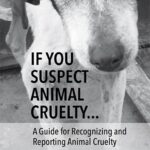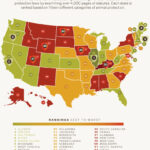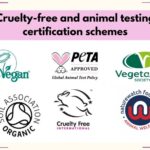Animal welfare has garnered significant attention in recent years, leading consumers to prioritize products that align with ethical values. In this landscape, brands like L’Occitane have come under scrutiny regarding their cruelty-free claims. This prompts an essential inquiry: Is L’Occitane genuinely animal cruelty-free, or is it potentially misleading consumers?
To navigate this complex issue, one must first delineate what “cruelty-free” specifically entails. Generally, this term signifies that a company neither conducts testing on animals nor endorses such testing practices within its supply chain. While several brands proudly affirm their commitment to non-animal-testing methods, the actual practices may reflect a more intricate truth than the straightforward label suggests. The examination of L’Occitane’s policies and practices is critical in addressing this subject.
L’Occitane, a brand known for its natural ingredients and ethos of sustainability, asserts a commitment to being cruelty-free. However, their claim becomes a focal point of discussion when considering the nuances of global market dynamics. In order to comply with regulatory frameworks in certain regions, particularly in mainland China, companies may be compelled to test their products on animals. Hence, while L’Occitane maintains that it does not test on animals, it remains pertinent to explore its distribution practices and regulatory obligations that could contribute to this claim’s contentious nature.
Furthermore, consumer transparency plays an indispensable role in maintaining brand integrity. L’Occitane does provide information on its animal testing policy, which asserts that the brand does not conduct animal testing at any stage of product development. Despite this proclamation, critics highlight inconsistencies, arguing that selling beauty products in markets where animal testing is mandated complicates the claim to being entirely cruelty-free.
Therein lies a pivotal aspect: the distinction between a brand’s self-declared values and the ecological realities surrounding their operational decisions. The integrity of L’Occitane’s cruelty-free assertions hinges on the often-overlooked dimension of supply chain ethics and regulatory compliance. The confusion can exacerbate potential consumer misconceptions, particularly when brands position themselves as ethical without a clearly articulated pathway to align with those ethics.
Moreover, consumers today are increasingly discerning and empowered by extensive information access. They seek assurance that their purchasing power will foster humane treatment of animals while simultaneously supporting sustainable practices. The rise of social media has illuminated various layers of consumer activism, promoting brands to publicly defend their ethical stances. This is now an expectation for companies, especially for those cultivating a brand image centered around natural and cruelty-free constituents.
Additionally, it is important to understand how L’Occitane addresses and navigates the criticisms they face. The brand has engaged in various charitable initiatives and environmental projects, which they use to bolster their image. However, such efforts do not always equate to an unwavering commitment to animal welfare. As consumers, there is a need to consider whether philanthropic efforts serve as a form of corporate social responsibility or whether they exist in genuine alignment with ethical consumerism.
In examining the marketing tactics employed by L’Occitane, it becomes evident that the language itself plays a significant role in shaping consumer perception. Terms like “natural” and “eco-friendly” are not protected by stringent regulations, leading to potential misalignment between consumer expectations and the product realities. This linguistic nuance can cloud the transparency that consumers deserve, particularly regarding how cruelty-free assertions are positioned within broader marketing strategies.
Furthermore, consumer sentiment regarding cruelty-free products reflects a multifaceted understanding of ethical consumption. Many consumers may not fully grasp the intricacies involved in a company’s relationship with animal testing regulations. The implications are consequential: consumers can unwittingly support brands whose practices do not align with their ethical beliefs. In L’Occitane’s case, the interplay of their marketing strategy, operational practices, and animal testing policies serves to highlight this dissonance.
For many conscientious consumers, the pursuit of truly cruelty-free products often leads to research and advocacy for comprehensive certification programs. They become advocates for accountability, pushing for standardized definitions and independent verification of cruelty-free claims. Established organizations strive to provide clarity through certifications that can bolster trust between brands and consumers, enabling easier navigation through the increasingly crowded marketplace.
Ultimately, the question persists: Is L’Occitane genuinely cruelty-free, or is it misleading consumers in what may appear to be an ethically nuanced landscape? Addressing this question requires more than just taking the brand’s words at face value; it necessitates critical scrutiny of their operational ethics, regulatory practices, and marketing strategies. As consumers, the onus lies upon individuals to demand greater transparency, engage in discussions surrounding animal welfare, and hold brands accountable to higher ethical standards.
In conclusion, understanding L’Occitane’s stance on animal testing is emblematic of a larger discourse within the beauty industry. The complexity of cruelty-free certifications, brand communication, and ethical consumerism intertwine, inviting consumers to participate actively in shaping the future of the beauty landscape. As we navigate this intricate tapestry of values versus commercial interests, consumers can become advocates for genuine change, fostering a market that aligns with their values and supports animal welfare substantively.









